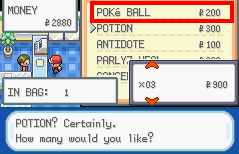Hiya! This is the Aurastella system Blog! Usagi, Minako, Amy Rose, Stella. 30's , Furry, Fighting games, anime, this is pretty much a reblog station for me. Occasional doodles of my own, vents ect. (She/Her, Autistic, Trans,poly,ΘΔ Otherkin, Plural and smooches @girlbat-girlbulge )
Last active 60 minutes ago
Don't wanna be here? Send us removal request.
Text



@oh-tobeafrog thank you for inspiring me with this galaxy brain take on my two favorite marvel heroes :)
original post here
18K notes
·
View notes
Text
In the Pokemon fandom, every once in a while you stumble upon a ‘Pokeballs are $200′ joke. In reference to how Pokeballs cost 200 of the in-game currency:

What a lot of fans, especially more casual ones, don’t seem to realize is that the currency in the Pokemon games it based on the Japanese yen. The symbol for the currency in the games even resembles the yen symbol:


In fact, according to Bulbapedia, the ‘Poke dollar’ symbol was specifically created for the English translations of the games, and the original Japanese versions use the yen symbol.
Now, for perspective, although the exact exchange rate naturally varies, a US dollar is equivalent to about 120 Japanese yen. So, 200 yen is about $1.67.
A Pokeball in the Pokemon games actually cost less then two bucks.
There’s a REASON we see so many young kids training Pokemon, especially early in the games. The cost of investing into a Pokeball to try catching their own Pokemon easily falls into the range of a typical kid’s allowance. A Potion for healing after battles is 300 (or about $2.50), but since Pokemon Centers offer their healing services for free, that’s a moot point.
Youngsters in the early game only give within a range from 50-150 of the currency, which is about equivalent to $0.40-$1.25. The first Gym Leader in Hoenn Region, Roxanne, give 1,680 in Omega Ruby/Alpha Sapphire, equivalent to about $14. Which is about right for the equivalent of a middle or high school honors student. A later Gym Leader, Winona, gives 4,200, or about $35. The Champion, Steven, gives 11600, or $96.67.
The winnings from enemy Trainers varies, but Ace Trainers seem to give out about 1500 or $14 on average, give or take. Swimmers (especially common later in ORAS), award a range from 400-800, or $3.33-$6.67.
Vitamins (such as Calcium, Iron, and HP UP), cost 9,800 or $81.67 each. An Ultra Ball cost 1,200, or $10. A Paralyze Heal costs the same as a Pokeball, while an Awakening is half that. A Revive is 1,500, or $12.50.
What’s the point of doing this? Well, for one, to get a better sense of the in-game economics, which can be hard to grasp if one doesn’t realize the in-game ‘Poke dollars’ are based on the Japanese yen. And a look at said economics reveals some interesting details.
First, it shows basic Pokemon training and raising is well within the affordability of a ten-year old, or older. Which makes sense as Pokemon is aimed at younger kids, and the develops would want them to have the sense that going on a Pokemon journey is something they could do if they somehow ended up in the Pokemon world.
On the other hand, it also shows there’s really not that much money to be made in Pokemon raising and training, unless you battle frequently and regularly against higher-level opponents regularly and and win. Which is…very much in line with how professional sports work in real-life. Pokemon battling gets compared to a sporting event a lot for a reason. The initial 3-D games were even called Pokemon *Stadium.* Parallels are frequently drawn between the Pokemon League tournaments and the Olympics in the anime. The low money output is probably also why we often see Gym Leaders and the like working other jobs.
Just something interesting I decided to look into. I’m a Pokemon fan first, before any other fandom, and always will be. It’s shocking that I haven’t written any meta on it yet.
Hope you enjoyed!
164K notes
·
View notes
Text
just saw this clip and i think itd make a funny reaction image what do u think... does it have potential
66K notes
·
View notes
Text
The tribes of Tumblr appeared to worship Apollo as their primary patron deity, most often under the epithet Apollo Spairahemon ("Apollo the Ball-Thrower") as a god of prophecy and sport. His name was typically invoked to celebrate a user blessed with uncommon prescience. Moments of prophecy were considered highly sacred and were often recorded, and such texts are sometimes accompanied by an artistic depiction of the god — either his traditional masculine image or, unusually, in the form of a young woman, which appears to have been an earlier style before a conservative shift toward more conventional iconography — preparing to cast a round rubber ball that our scholars believe was used in the sport known as "dodge ball". Much as other cults regarded his arrows as bringers of disease and health, this community believed that being struck by this ball would bestow prophetic visions.
Some icons are reproduced below:

An earlier depiction (c. 2020) of Apollo as a girl clad in a simple tunic and playing with other children. Figures are smiling and the image is brightly colored, indicating a celebratory outlook toward knowledge of the future.

A later piece (c. 2022) that resembles the traditional appearance of Apollo. References to childhood and play are omitted, and the god carries a more frightening aspect; perhaps this icon represented grim omens rather than good tidings.
32K notes
·
View notes
Text
Dear Capcom.
STOP FUCKING WITH THE MEGA MAN FANDOM
109 notes
·
View notes
Text
reblog this to pet the user you reblogged from please
153K notes
·
View notes
Text
reblog this to pet the user you reblogged from please
153K notes
·
View notes


















